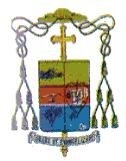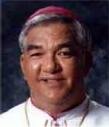The Catholic Bishops' Conference of the Philippines
The Official Website of
CBCP Online

Three stages of pastoral thrusts have helped to shape the Diocese of Digos in its fourteen years of existence. First was the development of a Family Life Apostolate; second was the building and strengthening of Basic Ecclesial Communities; and third, the implementation by the diocese of the National Pastoral Plan in accord with the acts and decrees of PCP II.
Towards the end of the 80's, the diocese held a diocesan assembly that undertook the double tasks of investigating and evaluating the different pastoral programs of the diocese. Out of that assembly came a formulation of its Vision-Mission Statement:
• Vision: "Christian communities united in the same spirit, fully developed, self-reliant and responsible, that pray, teach and serve in solidarity with the Magisterium—living signs of the presence of the Kingdom of God, and being effective instruments of its spread to other communities.
For its mission the faithful of Digos commit themselves to help one another 1) to become persons and communities that love and worship God, listen to His word and are intimately united with Him in the Eucharist; 2) to become informed, formed and transformed communities of persons with deep Christian values, and 3) to live the spirit of love and service for others as free children of God, entering into the evangelical task of effecting total human development.
The diocesan pastoral programs are placed under three commissions: Commission on Formation, Commission on Liturgy and Commission on Social Services. The parish pastoral councils as well as movements and organizations are placed under the umbrella of the Diocesan Council of the Laity (DICLA).
The Diocese of Digos has jurisdiction over 16 parishes served by 35 diocesan priests. Among its Catholic institutions are 2 colleges, 14 high schools, 4 elementary schools, and 7 kindergarten schools. The diocese has 993 Basic Ecclesial Communities and mission stations.
Digos, the capital of Davao del Sur, is also the seat of the Diocese of Digos which was once part of the Archdiocese of Davao. The diocese was created on November 8, 1979 by Pope John Paul II, and its first bishop, the Most Reverend Generoso Camiña, PME, was formally installed on February 11, 1980. Its titular patron is San Isidro, Labrador while Mary Mediatrix of all Graces is the patroness of its cathedral. The diocese is a suffragan of the Archdiocse of Davao.
The Diocese of Digos comprises the civil province of Davao del Sur, one of the three Davao provinces existing today. The province lies west of the Davao Gulf, north of the Celebes Sea, east of the Cotabato provinces and south of its sister province, Davao del Norte. It covers a land area of 3, 939 square kilometers that holds a population of 800,592, of which 71 per cent are Catholics.
As far back as the Spanish era, Muslim groups of the Maguindanao tribes were already settled in areas that were later to become important towns such as Tagum in Davao del Norte, Samal in Davao del Sur, and Mayo which is now Davao City. From seven tribal groups that had settled in the entire Davao area in the 19 th century, the Manobos ended up in Davao del Norte while the Bagobos occupied Davao del Sur.
The Spaniards explored Mindanao in 1528, when Saavedra went through the Sarangani Islands on the southwestern tip of Davao Gulf. Soon after, Villalobos skirted the eastern coasts and opened up the first settlement in what is now the district of Caraga in Surigao del Sur. The entire area around the Davao Gulf remained under the Sultan of Mindanao until 1848, when Spanish control was finally established.
The inhabitants today are mostly migrants from the Visayas, speaking the Cebuano dialect. The economy began to pick up in 1904 when Japanese plantations of abaca sprouted in the area. Crop lands are in the area referred to as the Davao Piedmont Area, while fishing is an important industry. The Philippine-Japan Friendship Highway which extends from Luzon to Mindanao (with ferry transfers), ends in Davao City but connects with a major highway to points south and to Cotabato. The entire Davao province was subdivided into three provinces politically in 1967.
In recent years many inhabitants fled the areas around Davao City because of frequent clashes between government forces and the adherents of the Communist-backed New People's Army (NPA). But the inhabitants organized a civilian movement ala vigilantes called "Alsa Masa" and succeeded in driving away these armed groups.
The year 1991 saw the convening of the Second Plenary Council of the Philippines which helped Filipino Catholics to deepen their awareness of the Faith, and see its relation to present social, political, cultural and economic realities. The faithful of the Diocese of Digos were no exception. They too were touched by the spirit behind PCP II.
His Excellency
MOST REV. GUILLERMO V. AFABLE, D.D.
Bishop of Digos
Doña Aurora St.
Digos City, 8002 Davao del Sur
Tels.: (082) 553-2012 Fax: (082) 553-5852
e-mail: athoc_dod@yahoo.com
|
Diocesan Curia |
|
Clergy |
|
Parishes |
|
Educational Center |
|
Institutions |
|
Statistics |

Diocese of Digos
